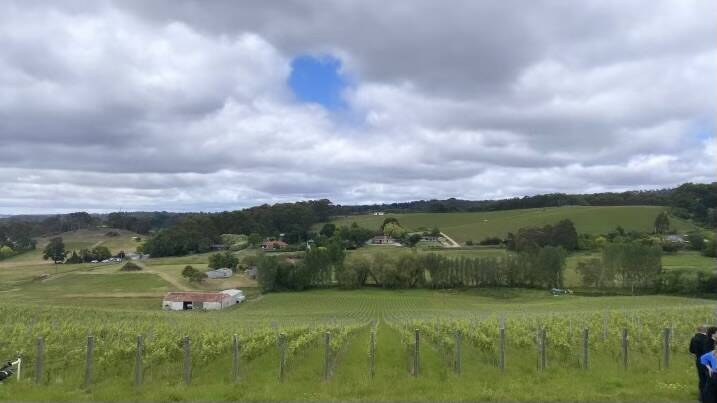A growing number of non-indigenous winemakers are negotiating with land councils for permission to use indigenous place names in labelling their wines.
Subscribe now for unlimited access.
$0/
(min cost $0)
or signup to continue reading
This comes as momentum builds to recognise and restore indigenous place names around Australia, from K'gari island to Uluru.
Wine brand 'Little Reddie' uses winemaking to reflect a sense of place in their central Victorian vineyard along the border of Dja Dja Wurrung and Wurundjeri country.
Little Reddie vigneron Pat Underwood said: "I always feel a strong sense of returning home, the elevation of the land and the grasses change."
The label's Dja Dja Wurrung wines are intended to show the flavour and character of grapes grown on the unique site with less concern for overly-involved winemaking processes.
Mr Underwood's negotiation with the Dja Dja Wurrung land council was successful but traditional ownership for his second site near Colbinabbin has proved difficult to establish.
"I was very surprised to learn the land around Colbinabbin did not have an official registered Aboriginal party laying claim to the traditional ownership" the nebbiolo-maker said.
The borders that divide some of Australia's Aboriginal land councils are subject to debate.
The Peramangk people in the Adelaide Hills are fighting for custodianship of their traditional land with a portion of their territory currently attributed to the neighbouring Kaurna people.
Peramangk elder Michael Hunter Coughlan was not involved in conversations between Kaurna representatives and an Adelaide Hills wine label listing the vineyards native lands as Peramangk and Kaurna.
"We're still waiting and as far as I know they are proceeding with that marketing campaign" Mr Hunter Coughlan said.

The Adelaide Hills winemakers association is encouraging members to engage with traditional custodians in the care and stewardship of the region.
Adelaide Hills Wine Region executive officer Sarah Carlson said "it will be a continuous journey of listening and proactively seeking opportunities to engage with Peramangk and Kaurna representatives".
READ MORE:
Winemakers wrangle soil, weather patterns and geographical features to create a sense of place through wine called 'terroir.'
Hazel restaurant sommelier Keith Sawyer said "terroir is the thumb print of an area."
"Pinot noir is grown around the world but the reason Burgundy tastes different to Central Otago pinot noir is terroir" he said.
An indigenous connection to land encourages spiritual, social and cultural recognition which could deepen Australian winemaker's understanding of ecology and natural resource management, Mr Underwood said.


